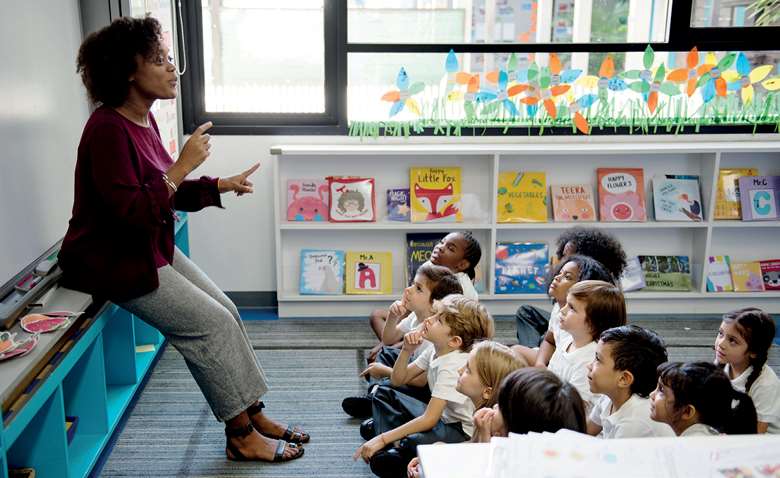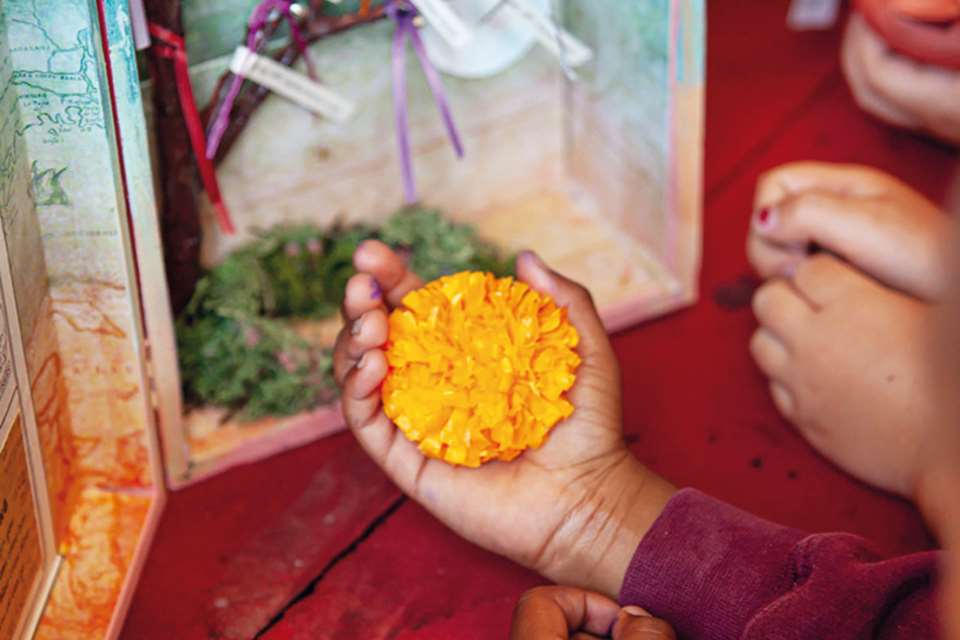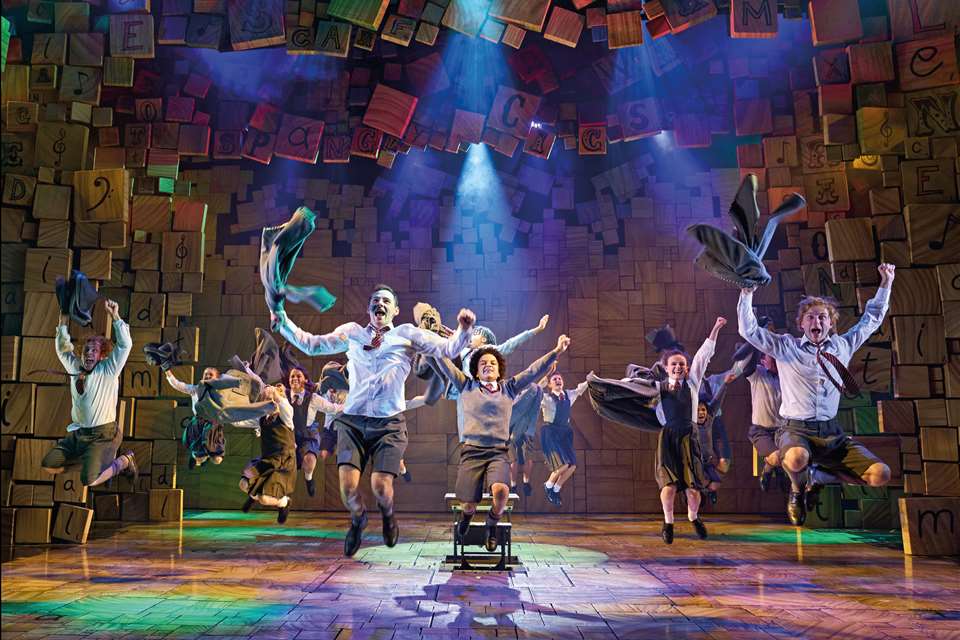Tips for primary drama teaching: Time for drama!
Kevin Holland
Friday, March 1, 2024
Are you a primary teacher who wants to integrate drama into your teaching, but you don't know how or where to start? Fear not! Kevin Holland offers a list of exercises and suggestions that can help

Adobe Stock / Raw Pixel
With at least 10 National Curriculum subjects to cover and the increasing pressures of performativity in UK schools, teachers can be forgiven for not finding time for drama in the classroom. Kevin Holland, Primary PGCE Course lead at the University of Sussex, shares how he ensures trainee teachers understand the value of drama and find time for it in a pressurised time-table.
Before joining the University of Sussex, I worked as a drama practitioner for 15 years, delivering workshops in schools across Sussex. Hall space would be booked for me and I would have the luxury of seeing four groups for one hour each across the day, using drama techniques to approach particular topics and themes. Although this was great to see schools investing in and valuing drama, these programmes were not leading to drama becoming embedded in the school curriculum, they were extra ‘enrichment’ days – something that has become less possible in recent times due to schools' financial constraints.
Growing the craft
In 2012 I registered for a Mantle of the Expert training weekend, where drama for learning and inquiry-based approaches are at the heart of the process. Developed by Drama in Education pioneer Dorothy Heathcote in the 1980's the class approaches a theme or text framed as a group of experts or a group responsible for a series of tasks for someone in need. The approach is values-based, requires empathy, develops consideration for different points of view and is a driver for curriculum goals. Framed as the expert team, the class will talk, write, draw, plan, design and evaluate their work, all striving towards a common goal.
This training changed the way I understood how drama techniques can be used in the primary classroom. No hall space is required, no budget needed for enrichment programmes and no need to add drama as another subject to cram into the timetable.
Drama strategies can be embedded as an essential medium for engaging with the English, humanities and PSHE curriculum at the very least. We should also note that using drama is cited in the Primary English National Curriculum – so I do tell my trainees that we are allowed to do this, actually it is an expectation.
Mantle of the Expert is an amazing way of engaging children, and I would encourage teachers to explore this further, however there are a range of drama strategies we can all use with less training. We may not be drama teachers and we may not feel confident trying these strategies; but I encourage my PGCE trainees to explore these in their settings and to recognise the value of them. Rich talk through drama techniques can then inform ideas for rich writing in the classroom. I encourage my trainees to enable their children to write in role from the character's point of view. This contextual writing can increase motivation in writing tasks.
Drama is a fantastic medium for talk in the classroom. The 2019 Speak for Change Oracy report highlights the increasing need for children to develop their communication, language and literacy skills and this is particularly the case post Covid-19.
Helpful techniques
When developing ideas for tasks, it is useful to consider the unseen parts of a story, what the reader or audience do not usually encounter. Professional actors will often improvise scenes beyond the text to develop further understanding of characters and situations. I often us this approach when creating tasks.
A useful ‘way in’ to these techniques is to create an imagined scenario, there is no need for the children to believe the situation is really happening. Drama can be more powerful when children know that they are stepping into an imagined context. The teacher can simply say ‘let's imagine …’ or ‘let's say…’ as a starting point.
All of these techniques can be done in class, with the children standing in spaces behind their chairs. All tasks are short, and we do not need to see each pair or group ‘performing’. We learn from the process; we do not need to share the product every time. I have used a well-known story of Hansel and Gretel as an example, but the opportunities are endless!
Some of these terms will be familiar but I have adapted them based on my own experiences of using them in the classroom .
- Framing the action and spotlighting
Rather than just going around the room for ideas, frame the action so the teacher is also in role. ‘Let's imagine that I am Hansel, and I am eavesdropping into a conversation between his father the woodcutter and his stepmother, who wants to send the children away. What does he hear’? Here, the teacher acts Hansel and moves across the class to ‘listen in’ as pairs create the exchange between the characters. This spotlighting technique is great for children to be able to hear other's ideas.
- Hot seat the teacher in role
As hot seating one child can be hard work for all concerned, I tend to reverse this, where the whole class question the teacher who is still in role. After eavesdropping, what questions shall we ask Hansel? What did his father and stepmother say? What is their plan? How do you feel? What will you do now?
- Still images, soundscapes and thought tracking
Let's imagine we are all part of the deep dark wood, what might you be? An old oak tree? A wise old owl? Create a sound scape…this is what Hansel and Gretel can hear when they are lost. Now let's add a sentence to this in the third person…. ‘The old oak tree creaked in the breeze’ or ‘the wise old owl scanned the land’. We then have a range of rich descriptions to inform creative writing later on.
- Spontaneous improvisation
This requires no planning time and gets the children on their feet, talking in role straight away. Let's imagine in pairs that one of you is Hansel and one of you is Gretel. Can you create the moment the bread has been eaten in the woods? The trail has disappeared and you realise you are not going to get home any time soon.
None of these tasks need to take any longer than 5 to 10 minutes each, but they are fantastic ways to develop understanding and inform ideas for writing. From the examples cited here, children could write a persuasive letter from the woodcutter to his wife pleading to not go through with this plan and describing the dangers of the wood or diary entry from Hansel once the bread has been eaten.
As I say to my PGCE trainees, it will never all go according to plan. As you explore these techniques and research others, you will find your way of using them that best suits you and your children. What you will always get however are a range of responses from your class that will develop understanding and ideas around the given context.








